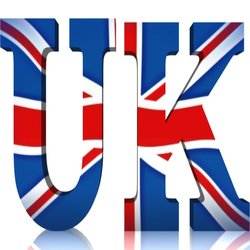The Bank of England benchmark rate remains unchanged after the Monetary Policy Committee voted to keep it at 0.5%. The Committee also voted to keep the stock of purchased assets at £375 billion.
Experts had expected the UK’s central bank to keep interest rates where they were, despite growing signs of an accelerating economy and rapidly-rising house prices.
In May, Governor Mark Carney announced that interest rates would stay low “for some time.” With inflation currently below the central bank’s target of 2% , the Monetary Policy Committee can afford to wait. With the pound sterling rising, inflation is unlikely to start shooting up.
The European Central Bank’s Governing Council voted today to reduce the benchmark interest rate to 0.15%, the marginal lending facility rate to 0.40%, and the interest rate on the deposit facility to (minus) -0.10% in response to a looming deflation threat.
BoE mixed messages
There has been criticism regarding some mixed messages coming out of the Bank of England. While Mr. Carney keeps reassuring people that rates will remain low, other members of the MPC say they should be raised soon.
David Kern, Chief Economist at the British Chambers of Commerce said:
“The decision to keep interest rates and quantitative easing on hold was the right one. However, efforts to support the recovery are being hampered by repeated calls for early interest rate rises. Inconsistencies between Governor Carney’s reassuring remarks and other comments from the MPC are undermining. To sustain business confidence, the MPC must strive to communicate clear and consistent messages.”
“With annual CPI inflation below target, the MPC can afford to wait before tightening their policy. The strong rise in sterling over the past year, making UK exports more expensive, is an important reason for not raising interest rates prematurely. At a time when other central banks, such as the ECB, are considering easing policy, an early UK move could increase the pressure on our exporters. The MPC must also reassure businesses that when rates start rising, increases will be modest and gradual, to avoid any unwelcome surprises.”
In an interview with the Financial Times, Martin Weale, who economists believe will be the first MPC member to vote for a rate rise, said “We can wait a bit longer (before raising rates). How long that ‘bit longer’ will be, I’m not sure, but the best judgment I can have is that it’s not so urgent it needs doing now.”
UK in strong economic rebound
The Confederation of British Industry reported record-high economic growth for May, the highest figure since the CBI Growth Indicator started in 2003. In a separate study, the British Chambers of Commerce forecast 7-year high growth for 2014.
According to Mark Carney, the UK’s financial stability’s and long-term recovery’s greatest risk is the housing market. He added that the Bank of England is closely monitoring rapidly-rising property prices, as well as the increase in large-value mortgages.
UK GDP (gross domestic product) grew at 0.8% during the first quarter of 2014 and by 3.1% in 2013, making it the fastest growing of the G7 economies. However, unlike the other six nations, output is nowhere near what it was before the financial crisis.

